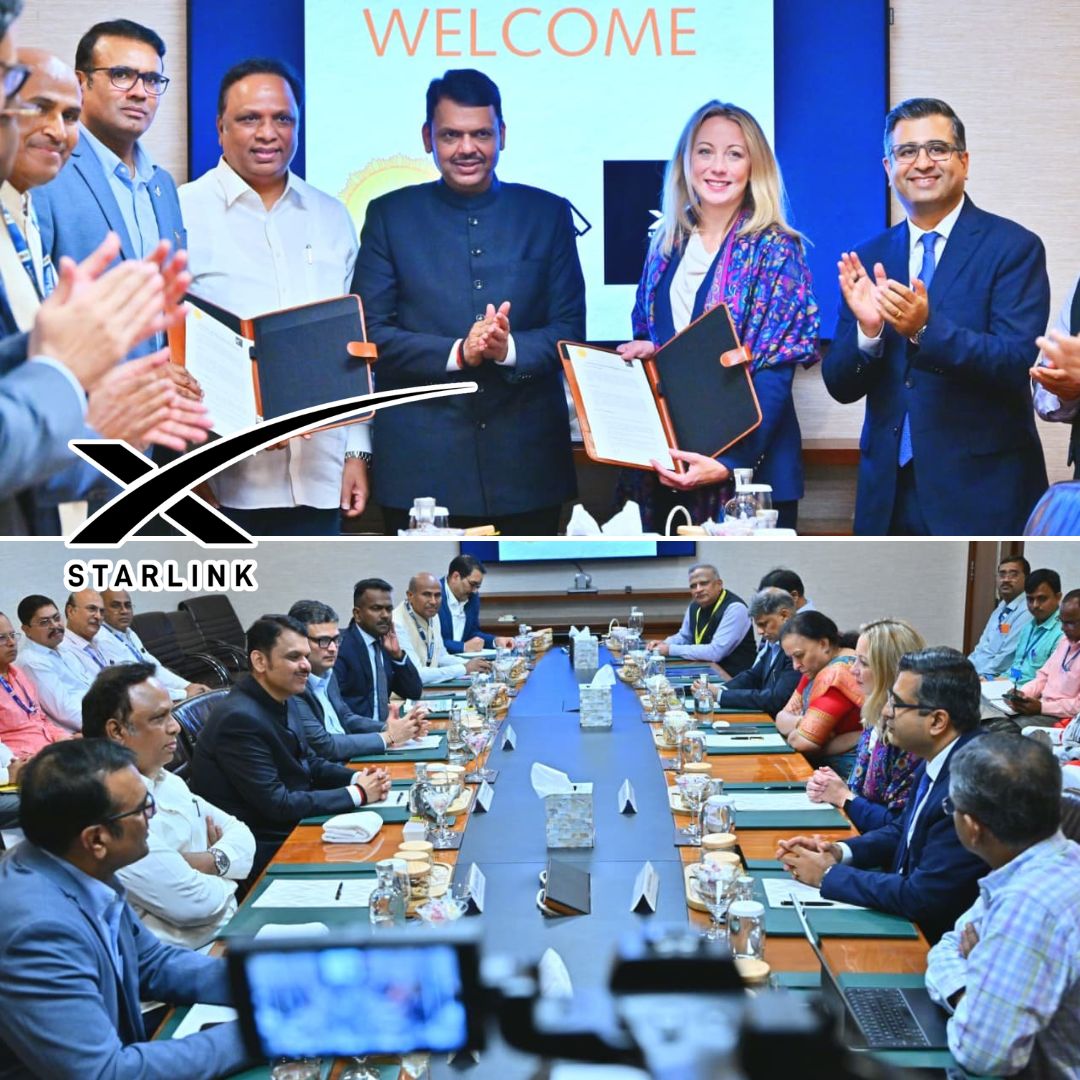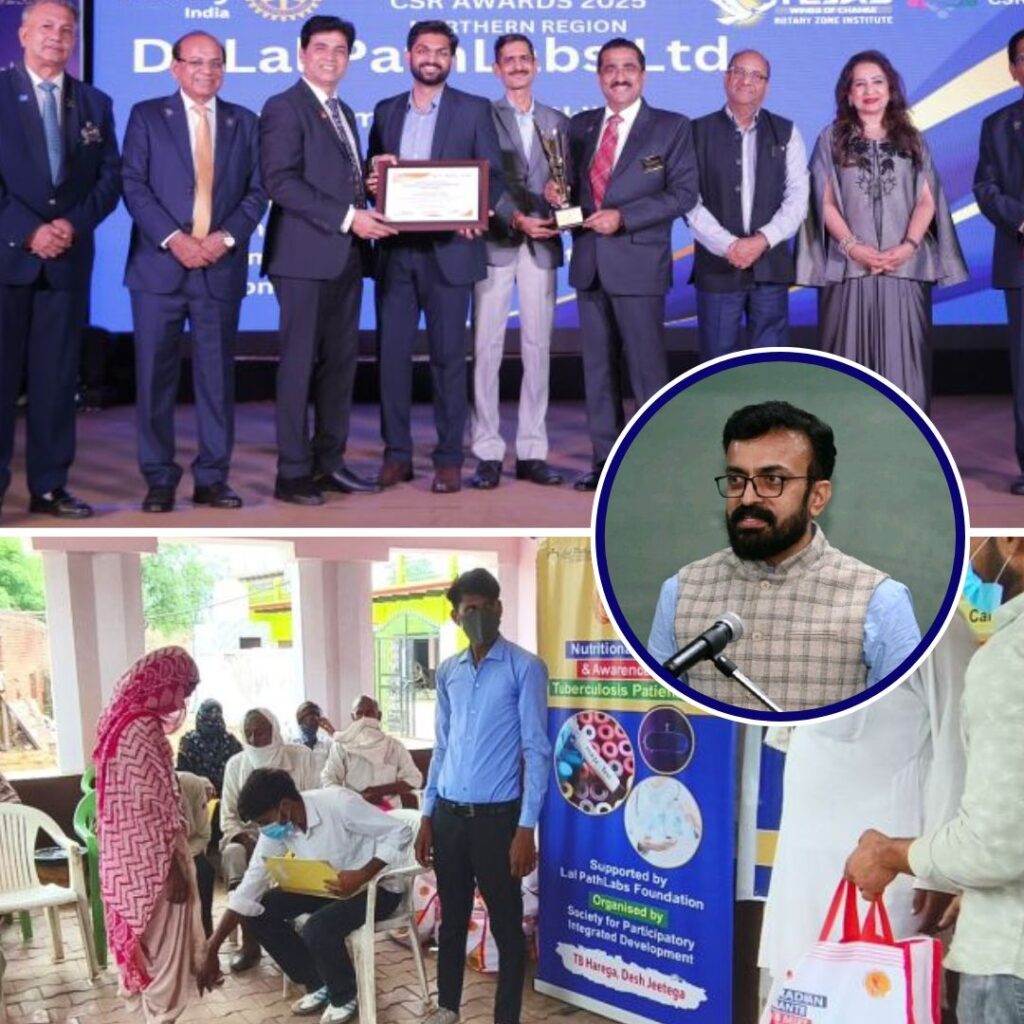Maharashtra has become the first Indian state to formally partner with Elon Musk’s Starlink Satellite Communications to deliver satellite-based internet connectivity across its remote and underserved regions.
The government signed a Letter of Intent (LOI) with Starlink Satellite Communications Pvt Ltd on November 5, 2025, in Mumbai, marking a pioneering step towards bridging the state’s digital divide.
Chief Minister Devendra Fadnavis, who was present at the signing ceremony alongside Starlink Vice President Lauren Dreyer and the state’s IT Secretary Virendra Singh, described the partnership as a transformative leap towards creating a future-ready, digitally inclusive Maharashtra.
This initiative aims to provide high-speed, low-latency internet to rural communities, government institutions, and critical public infrastructure in districts such as Gadchiroli, Nandurbar, Washim, and Dharashiv.
The partnership complements Maharashtra’s Digital Maharashtra mission and integrates with other development programs including electric vehicle rollouts, coastal monitoring, and disaster resilience.
A Leap Towards Digital Empowerment in Rural Maharashtra
The collaboration between Maharashtra and Starlink is designed to directly address connectivity challenges faced by remote areas typically underserved by traditional terrestrial networks.
Starlink operates the world’s largest satellite constellation in low-earth orbit (LEO), providing broadband internet capable of supporting streaming, video conferencing, online education, and telemedicine even in difficult terrains where fibre optic cables are often unviable.
Chief Minister Fadnavis emphasised that this partnership would connect “every village, every school, and every health centre, no matter how remote,” symbolising a significant milestone for digital infrastructure at the grassroots level.
Starlink’s Lauren Dreyer echoed these sentiments, stating the company’s mission to offer affordable, reliable internet access globally and their honour to partner with Maharashtra in this historic venture.
The phased rollout will prioritise districts with poor connectivity, leveraging satellite technology to bridge the last mile that has long hindered development in tribal and aspirational regions.
Background and Strategic Importance
Maharashtra’s ambition to bridge the digital divide builds on earlier infrastructure efforts such as the MahaNet fibre network project, which encountered significant deployment challenges, particularly in remote, forested, and mountainous regions of the state.
Traditional terrestrial networks, which rely on laying physical cables, have struggled in these areas due to difficult terrain and sparse populations, making internet penetration slow and uneven.
Satellite internet, by contrast, circumvents these physical limitations by using space-based low-earth orbit (LEO) satellites positioned just a few hundred kilometres above the Earth, capable of delivering high-speed internet across vast and inaccessible areas without the need for costly ground infrastructure.
This pioneering partnership with Starlink is a strategic upgrade from previous attempts by Maharashtra to achieve universal connectivity. Starlink’s network is composed of thousands of small satellites operating in LEO, offering significantly reduced latency and higher bandwidth compared to conventional geostationary satellites.
This technology allows for rapid internet deployment and consistent service, even in tribal and aspirational districts such as Gadchiroli, Nandurbar, Dharashiv, and Washim, which suffer from persistent digital exclusion.
The reliability and scalability of Starlink’s satellite internet can support multiple use cases ranging from basic browsing to critical applications like telemedicine, remote education, and digital government services.
Moreover, the collaboration is a critical enabler for other key developmental sectors. In disaster management, especially in flood-prone and cyclone-affected coastal areas, real-time data transmission and communication facilitated by satellite internet can enable quicker response and coordination.
For smart agriculture, reliable internet empowers farmers with timely weather updates, remote sensing data, and access to digital marketplaces, which are vital for improving productivity and sustainability.
As Maharashtra embarks on electric vehicle rollouts and coastal development projects, satellite connectivity ensures uninterrupted monitoring and management.
Experts widely regard Maharashtra’s Starlink partnership as a potentially transformative model, inspiring other Indian states grappling with geographical and infrastructural challenges to adopt a hybrid framework of satellite and terrestrial networks.
This model has the potential to accelerate socio-economic development by seamlessly connecting remote communities with digital opportunities.
The Logical Indian’s Perspective
The Maharashtra–Starlink partnership marks a commendable stride in recognising internet access as an essential public good fundamental to inclusive national progress. Digital connectivity is no longer a luxury but a necessity for equitable participation in education, health, governance, and commerce.
The Logical Indian applauds this move towards digitally empowering marginalized sections and rural communities, who have historically been left behind in India’s rapid urban-centric growth.
However, as transformative as satellite internet technology may be, its success hinges on transparent governance, continued public engagement, and safeguards ensuring affordability and accessibility for all sections of society. Technology must be a bridge that unites rather than a fence that divides.
🚀 A proud milestone for Maharashtra!
— CMO Maharashtra (@CMOMaharashtra) November 5, 2025
Under the leadership of CM Devendra Fadnavis we have become the first Indian State to partner with @Starlink to deliver satellite-based internet connectivity across our remotest regions — subject to necessary approvals from the Government of… pic.twitter.com/JoZb2RbyYf













